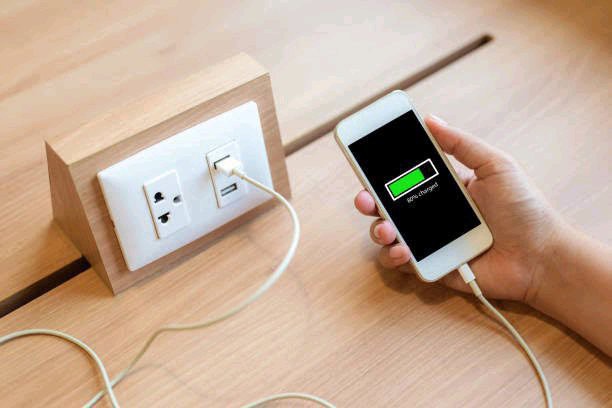Properly charging your mobile phone is essential to maintain its battery health and ensure longevity. However, many users unknowingly engage in charging practices that can degrade battery performance over time. Here are common mistakes to avoid:
1. Charging to 100% Regularly
While it might seem logical to fully charge your phone to maximize usage time, consistently charging to 100% can stress the battery. Lithium-ion batteries, commonly used in smartphones, experience increased wear when maintained at full charge for prolonged periods. To optimize battery lifespan, it’s advisable to keep the charge level between 20% and 80%. This practice reduces the strain on the battery and can prolong its effective life.
2. Ignoring Optimized Charging Features
Modern smartphones come equipped with battery management systems designed to enhance battery health. Features like “Optimized Battery Charging” on iPhones or “Adaptive Charging” on Android devices adjust the charging rate based on your usage patterns, preventing the battery from staying at full charge unnecessarily. Enabling these features can significantly reduce battery aging.
3. Using the Phone While Charging
Using your phone during charging, especially for intensive tasks like gaming or streaming, can generate excessive heat. Elevated temperatures can degrade battery components and reduce overall lifespan. It’s best to let your phone charge undisturbed to minimize heat generation.
4. Using Non-Genuine or Incompatible Chargers
While third-party chargers may be cost-effective, they can pose risks to battery health and safety. Cheap, non-standard chargers might deliver unstable current or voltage, leading to overheating or even potential hazards like fires. Always use chargers recommended by your phone’s manufacturer to ensure compatibility and safety.
5. Charging in Extreme Temperatures
Exposing your phone to extreme temperatures during charging can be detrimental. Both excessive heat and cold can lead to electrode degradation, affecting battery performance. It’s advisable to charge your phone in a stable, moderate environment and avoid placing it under pillows or blankets during charging, as this can trap heat.
6. Charging Overnight
Leaving your phone plugged in overnight can result in prolonged periods of full charge, which may accelerate battery wear. Although many devices have mechanisms to stop charging once full, maintaining a 100% charge for extended periods isn’t ideal. To preserve battery health, consider charging your phone during the day when you can unplug it once it reaches the desired charge level.
7. Using Fast Chargers Excessively
Fast charging offers convenience but can generate additional heat, contributing to battery degradation over time. While occasional use is acceptable, relying solely on fast charging can shorten battery lifespan. It’s beneficial to use standard charging methods when possible to minimize heat generation.
8. Allowing the Battery to Drain Completel
Regularly letting your phone’s battery drain to 0% before recharging can strain the battery. Lithium-ion batteries don’t have a “memory effect,” so deep discharges aren’t necessary and can be harmful. Keeping the battery within the 20% to 80% charge range is more beneficial for its health.
9. Using Damaged or Worn-Out Cables
Damaged charging cables can cause inconsistent power delivery, leading to potential battery harm. Frayed or exposed wires pose safety risks, including electric shocks or fires. Regularly inspect your charging cables and replace them if they show signs of wear.
10. Believing Battery Myths
Misinformation about battery
maintenance can lead to improper charging habits. For instance, the belief that batteries need to be fully discharged before recharging is outdated and doesn’t apply to modern lithium-ion batteries. Staying informed with accurate information is crucial for proper battery care.
By avoiding these common mistakes, you can significantly enhance your phone’s battery health and ensure its longevity. Adopting mindful charging habits not only preserves battery performance but also contributes to the overall safety and efficiency of your device.




